Windows Package Manager (Winget) Cheat Sheet
Windows Package Manager is a command-line application for Windows 11 that simplifies the installation and updating of software. It’s easy to use and reasonably reliable.
Windows Package Manager is also known as Winget and it’s bundled with Windows 11. I’ve been using it for about six months now and have installed the majority of the software on my Windows 11 machine via Winget. Winget is accessed via the Command Line, although I prefer to run it in Windows Terminal.
Here’s my list of the most common tasks in Windows Package Manager:
- Listing installed software
- Searching for new software
- Installing software
- Checking for updates
- Updating software
- Uninstalling software
See also Problems with Windows Package Manager.
Listing installed software
To show all software installed on your Windows 11 machine, type:
winget listThe output will be a complete list of everything. Packages installed with Winget will be shown as such in the “Source” column.
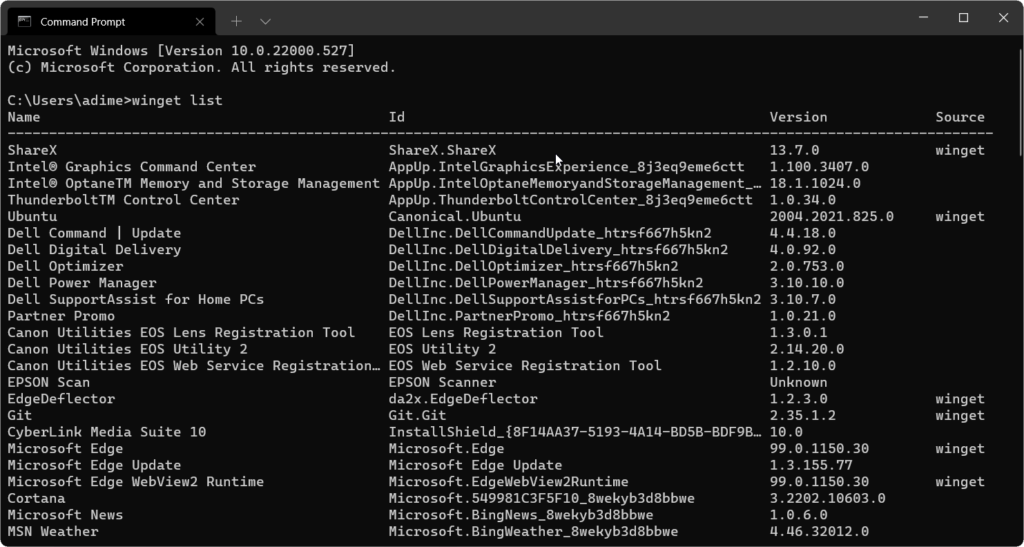
To search for a package via a string, add a query after -q:
winget list -q AdobeIn this case, I searched for all packages that contain the word “Adobe”

Searching for new software
To search for new software, type:
winget search -q acrobatWhere the -q flag is followed by the query that is to be searched. In this case, I searched for all programmes with “acrobat” in their names.

Installing software
To install software via Winget, you will require the ID of the programme. You can either use the search method above, or alternatively search on winget.run.
Windows Package Manager will organise the installation location for you, so there’s nothing more that you need to do other than enter the command and approve the install as an administrator.
For instance, if I wanted to install Acrobat Reader, I would enter the following code (where Adobe.Acrobat.Reader.64-bit is the name of the 64-bit version of Acrobat Reader in Windows Package Manager):
winget install Adobe.Acrobat.Reader.64-bitThe latest version of the application will be downloaded from the vendor’s servers and then installed.
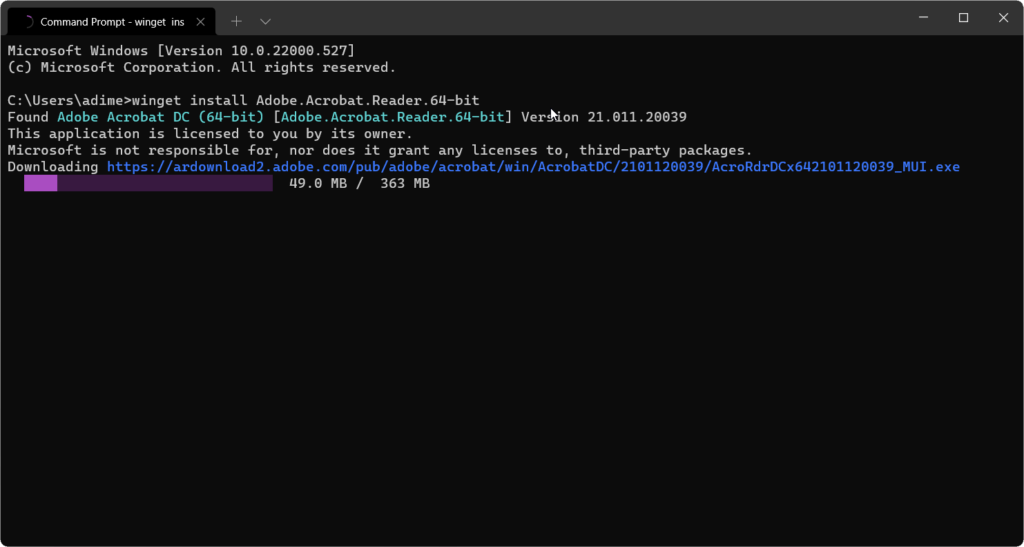
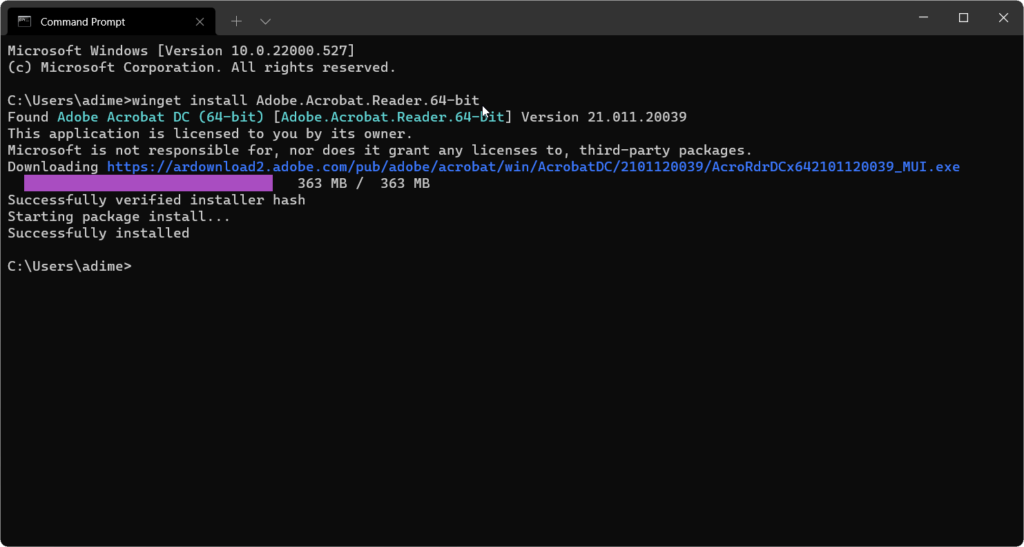
Checking for updates
To check for any updates to installed packages, enter the following code
winget upgradeWindows Package Manager will then list all applications for which there is an upgrade available.
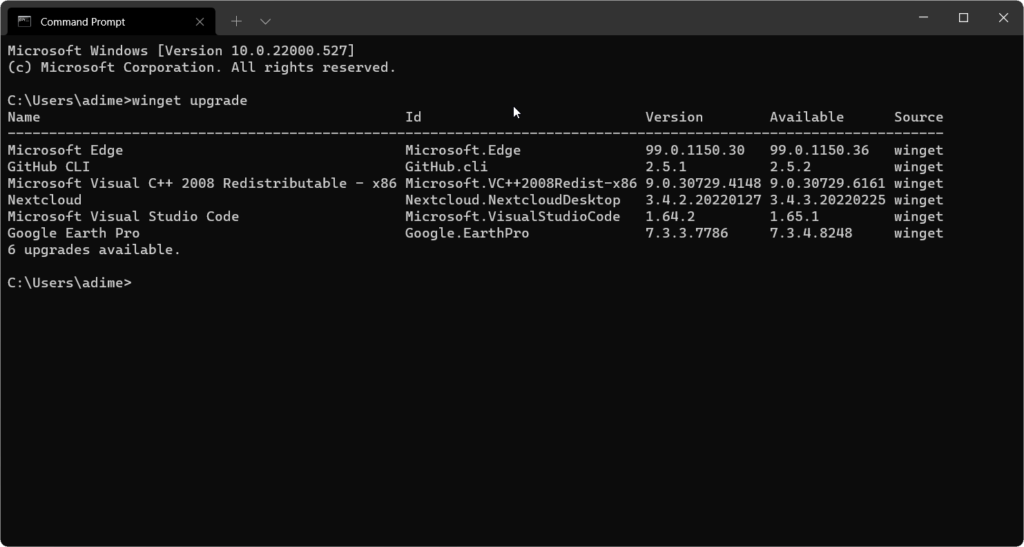
Updating Software
To upgrade an individual package, enter the following code where the –id flag precedes the ID of the software package to be upgraded (in this example, NextCloud which has the ID Nextcloud.NextcloudDesktop):
winget upgrade --id Nextcloud.NextcloudDesktop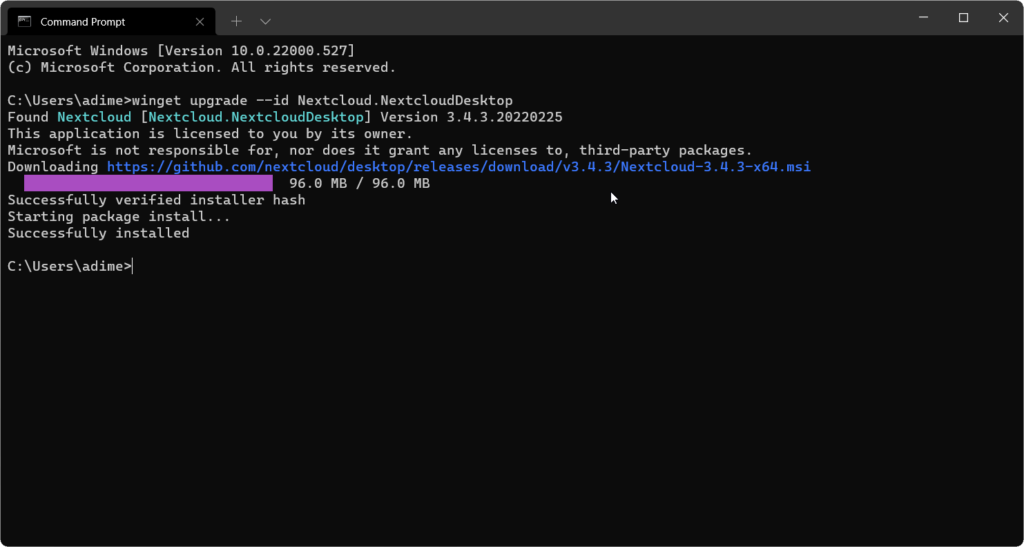
To upgrade all available packages, enter the following code:
winget upgrade --all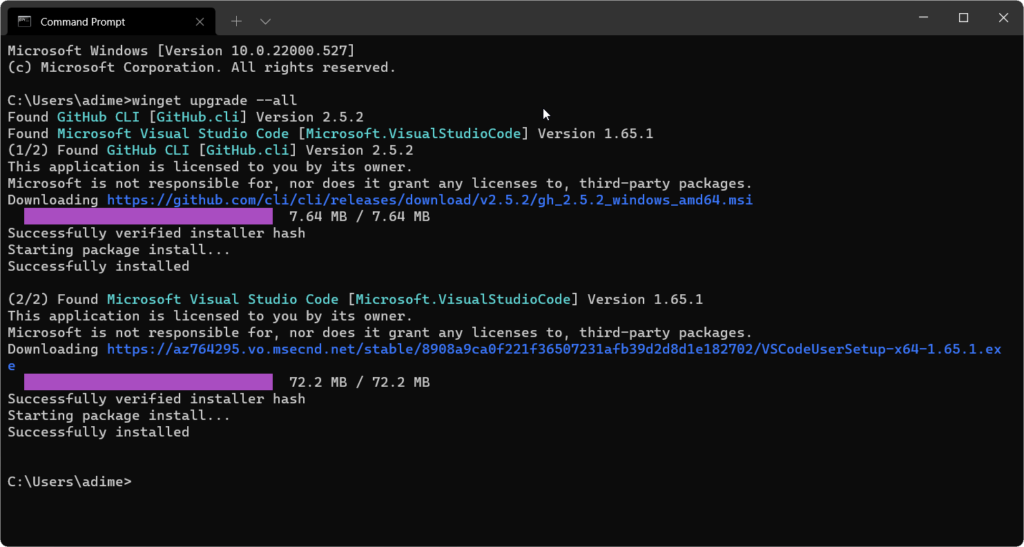
Uninstalling software
To uninstall a package, use the following code where Adobe.Acrobat.Reader.64-bit is the ID of the package that you want to uninstall:
winget uninstall Adobe.Acrobat.Reader.64-bit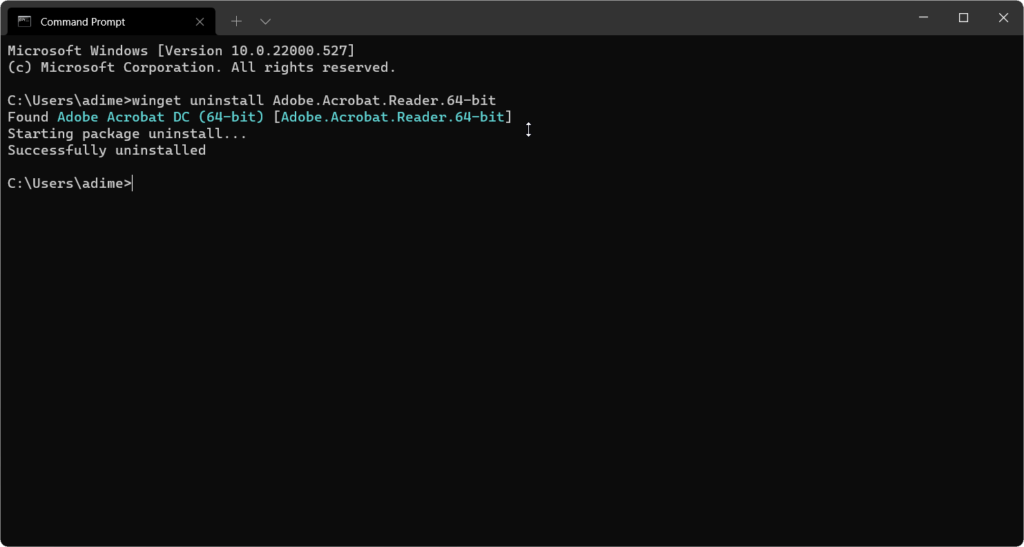
Problems with Windows Package Manager
There are a couple of problems with the Windows Package Manager that I have noticed.
The first lies within the search function where it is currently not possible to search for all applications that are managed by winget. You should be able to enter the following code to return all applications managed by winget (as opposed to being manually installed):
winget list -s wingetUnfortunately this syntax returns a list of all installed software as of Windows Package Manager version 2022.308.2322.786. This is a known bug.
The second problem is an upgrade error for some packages that reads “A newer version was found, but the install technology is different from the current version installed. Please uninstall the package and install the newer version“. This is also a known bug.

A workaround is to uninstall and then reinstall the app.
Comments
No comments have yet been submitted. Be the first!